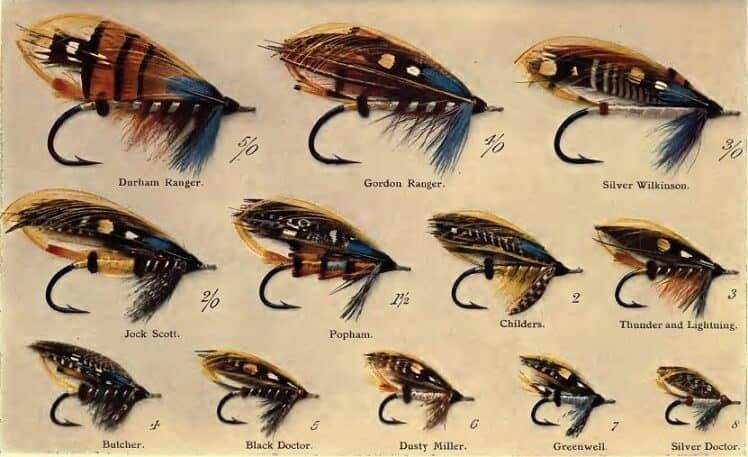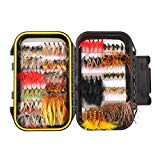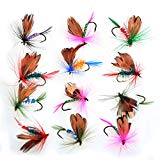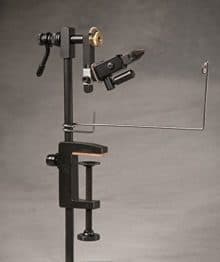Best Fly Fishing Flies
Fly patterns are designed to look like fish food. While the majority of flies are designed to look like insects, fly patterns may look like anything a fish might eat. We carry a selection of pre-assembled kits or select favorites that will get you on the right track.
Why do we use flies instead of bait?
One of the building blocks of fly fishing is that this method allows us to more easily catch and release fish unharmed. When to compared to fishing with conventional gear and tactics, fly fishing is a low impact. When anglers fish with worms, salmon eggs, live bait, or even scented lures, fish ingest the hooks, which can cause damage to their throat, stomach, or gills. These methods are great for catching fish to keep, but fly fishing allows you to easily catch and release fish with minimal impact. In general, because flies are made out of fur, feathers, and synthetics, fish do not swallow them. Usually, they will bite the fly and avoid swallowing it because it doesn’t taste like food. This means you have to be quick on the draw before they spit our offering out, so in turn, you usually hook them in their mouth, instead of their throat or gills. This allows fly anglers to participate in sensitive fisheries that are managed for catch and release fishing.
Choosing the right fly fishing flies
Fly patterns are designed to look like fish food. While the majority of flies are designed to look like insects, fly patterns can look like anything a fish might eat. For example, there are fly patterns that look like crabs, crayfish, shrimp, worms, leeches, and other fish.
Once you understand that flies are simply supposed to look like fish food, choosing the right fly gets pretty easy. To choose the right fly you need to start thinking like a fish. A good place to start is by attempting to answer the question, “what are they eating?” Let’s say you are fishing in a river or lake and are looking to catch some trout. You will already know that in general, the staple parts of a trout’s diet are insects.
The more you fish, the more you’ll start thinking like a fish. Try out a few of the following ideas to determine what the fish might be eating:
- Take your time getting ready to fish and be observant of insects flying around.
- Look on top of and underneath rocks near the river or lake.
- Check spider webs; chances are the spiders are eating a lot of the same bugs the fish are.
- Get your nose right down on the water, maybe 1 inch away; do you see any bugs on or just under the surface of the water?
- Take a look around for grasshoppers or ants. Insects that may hop, crawl, or fall into the water are all easy pickings.
- If you catch a trout, they sometimes will puke up their last meal. This is like cheating on your SAT’s. This is a sure thing so keep your eye out!
- Take a look in the shallows; do you see any baby fish? If so, what color are they? How long are they? Fish do eat other fish.
If you find something in or near the river that you think the trout might be eating then ask yourself the following questions to get yourself in the ball game:
- Do I have a fly that looks like this?
- Are my flies a similar color?
- Do I have a fly that is a similar size?
If you can say yes to any or all of these questions then you have a good starting point. If not, just get as close as you can with the pattern you choose, and come back to get some flies that are closer to what you see before you head out again. Even, if you fail to find anything close to what you think the fish might be eating, start with a fly pattern that you know is a proven winner.
This gives you some idea of the thought process behind knowing what fly to select. It’s a waste of your time to sit at home trying to memorize the names of the thousands of flies out there and the species they imitate. Just get out there and tie one on!
Starter Kits
Starter kits are a great way to get you in the game fast. You certainly do not need hundreds of fly fishing flies to get started, so these kits will give you a basic selection of flies that are proven winners. They have been in use for generations of fly anglers and may include small selections of dry flies, nymphs, and streamers. Even if you have no clue what the names are or what they imitate, you can be confident they’ll get you in the game.
Hatch Chart
A hatch chart will be a significant help in getting you started identifying what types of insects are available on the streams or lakes that you plan to visit during certain times of the year. Sometimes hatch charts will also have specific recommendations for fly patterns as well. They are only meant to give you a general idea about what to look for, but ultimately it will be your skills as an observer that will help you the most.
Fly Patterns and Insect Life Cycles
Dry Flies
Dry flies are fly patterns designed to float on the surface of the water. Many dry fly patterns use bits of elk or deer hair to trap air within the fly pattern and keep it afloat. Other patterns use the hackle from chicken feathers to prop the fly upon the water or small chunks of foam. Recently, even small plastic balloons have been used. Flies riding on the surface of the water may imitate an insect drying its wings in preparation for taking off, or one that has died and fallen to surface.
Wet Flies
Wet flies can describe any type of fly pattern that is designed to fish under the surface of the water. It also can commonly refer to fly patterns tied with soft hackles. Instead of being tied with the more stiff fibers of a rooster feather, soft hackles are tied with the more absorbent and flexible fibers of a hen feather. This type of hackle soaks up water and helps to sink the fly below the surface. Wet flies can be used to imitate the larval, pupa, or emergent stages of an insect’s life cycle.
Streamers
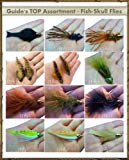
![]() Streamers are fly patterns that are designed to imitate foraged foods like baitfish or leeches. Sometimes they don’t have to imitate anything at all but may just look like something good to eat. Streamers are designed to fish under the water and can be stripped or swung through the water to look like something alive. Often streamers will employ long flowing materials that are designed to move and “breath” in the water with life-like action.
Streamers are fly patterns that are designed to imitate foraged foods like baitfish or leeches. Sometimes they don’t have to imitate anything at all but may just look like something good to eat. Streamers are designed to fish under the water and can be stripped or swung through the water to look like something alive. Often streamers will employ long flowing materials that are designed to move and “breath” in the water with life-like action.
Salt Water
These days, fly anglers are fishing for anything that swims. From the saltwater beaches of Massachusetts to warm waters of the Mexican Caribbean, there are plenty of opportunities to target saltwater fish. With such a huge variety of species that are willing to take a fly, the selection of saltwater fly patterns have exploded in recent years. These patterns are tied to represent baitfish, shrimp, crabs or just any yummy critters that may live in the bottom.
Insect Life Cycle
You do not have to be a Ph.D. in entomology to understand enough about bugs to help you get started in fly fishing. Aquatic insects make up the bulk of the diet for many fish species. It’s helpful to understand the life cycle these insects go through to more closely imitate their form with your fly fishing flies. Fish will not only focus on one particular insect but also a particular stage of that insect’s life. Sometimes, you may see thousands of bugs flying around, but no fish eating them. This doesn’t necessarily mean the fish aren’t eating, it may just mean they are eating the bugs while they are still immature and swimming their way to the surface. The adult insects you see buzzing around a river or lake only represent a very small portion of their life span. For instance, mayflies may live on the rocks on the bottom of a river for up to two years, and only spend one day as a fully formed adult winged insect.
Adults
Every species of aquatic insects does it a little differently but after they emerge and hatch into adults, they’ll often float on the surface of the water like little sailboats, drying their wings. In the short time it takes for them to take off and fly away, they are sitting ducks for hungry fish. After they take off, their next mission in life is to mate. Depending on the species, aquatic insects may live as little as 1/2 a day or 1 week. They need to do their business quickly and competition is fierce. At times, you may see clouds of bugs all trying to get it on. After they’ve mated, their next task is to deposit their eggs, and soon after die and fall into the water.
The method: When you fish flies that imitate these adult insects drying their wings or dead on the surface, it’s best to attempt to drift dry flies naturally downstream on the surface of the water.
Nymphs
The term “nymph” in fly fishing circles refers to the immature stage of a Mayfly, Damselfly, Dragonfly, or Stonefly. The nymphal stage of an insect’s life is spent crawling around on the bottom of the lake or streambed. You’ll often find nymphs clinging to the bottom of river rocks or submerged timber. Occasionally, as these nymphs crawl around doing what nymphs do, they become dislodged from their shelter and tumble downstream along the bottom. Waiting fish will gobble them up if the opportunity presents itself, especially when these nymphs begin the perilous journey to the surface to try and molt into their adult form.
The method: When you fish flies that imitate these adult insects drying their wings or dead on the surface, it’s best to attempt to drift dry flies naturally downstream on the surface of the water.
Larvae
Two of the most important families of insects for fly fishermen are Caddisflies and Midges. These insects go through a complete metamorphosis cycle more similar to butterflies. Instead of using the term “nymph”, the immature form of Caddis flies and Midges are called larvae. Caddis fly larvae build houses for themselves out of small bits of rocks, sand, leaves or wood. The caddis larva will live in this case, growing and creeping along the lake or river bottom until it’s time to morph into the pupa stage. Instead of building a little house like the Caddis fly, the larval stage of the midge grows in a silted or muddy bottom. They also eventually morph into a pupa, before emerging into an adult.
The method: Flies that imitate larvae can be fished like nymphs (called nymphing). Often, a strike indicator is used to keep the flies on or very near the bottom.
Pupae
The next stage of life after the larval stage for caddisflies and midges is the pupa stage. This is the stage of their life that transitions them from larvae to adult. Pupae are actively trying to get to the surface. Depending on the species, they will swim, wiggle, or float their way to the surface.
The method: There are many ways to fish flies that imitate pupae. They can be nymphed with or without a strike indicator, swung across a current or fished in a manner that raises them from the bottom to the surface. Sometimes they can also simply be presented dead-drift like a dry fly, only submerged a few inches from the surface.
Emergers
After Mother Nature decides that it’s time to morph into the next stage, the nymphs and pupae rise to the surface to hatch into adults. This is a very perilous journey for them as they are easy targets for hungry fish. As they near the surface, the adult insects begin to wiggle and work themselves free from their encasing or shuck. At the same time that they are struggling to break out of their shuck, they also have to dig their way through the surface tension of the water before they can emerge as adults. Fish are very instinctual and are keenly aware when insects are in this vulnerable stage. At times, fish almost seem to prefer eating insects when they are in the emergent stage versus an adult stage. They are simply easier targets!
The method: Fly patterns that are designed to imitate emergers sit half in, and half out, of the water. They are almost always dead-drift like a dry fly, but their materials are made to sink a portion of the fly below the surface as if it is struggling to break free of its case and become an adult.
Terrestrials
Fish are very opportunistic and don’t limit themselves to only aquatic insects. Bugs like grasshoppers, ants, beetles, cicadas, and even bees are all on the menu. The life cycles of these insects happen out of the water and so are called terrestrials. There are fly patterns designed to imitate nearly every type of terrestrial insect. So, the next time you are heading to your favorite lake or stream and scare up a grasshopper, take note because the fish likely have as well!
The method: Fish terrestrials just like dry flies, although it’s a good idea to twitch, skate, and jump terrestrial fly patterns on the surface as if they have mistakenly fallen into the water and are desperate to get out. Don’t overdo it though, small little twitches that just barely make a disturbance on the water will do the trick.
Conclusion :
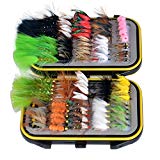
![]() If two fly anglers meet from different parts of the world, with different experience levels, and even opposing views on life, they’ll always have one thing in common…flies!
If two fly anglers meet from different parts of the world, with different experience levels, and even opposing views on life, they’ll always have one thing in common…flies!
Flies are the subjects of riverside campfire talks, barroom debates, and mythical stories. If fishermen tell good fish stories, they tell even better fly pattern stories. There are more resources available now for learning about flies and fly patterns than you can even imagine. I encourage you to seek them out and do a healthy dose of reading to get you up to speed.
There is A LOT to know about fly fishing flies, and there are thousands of fly patterns. Anglers are always looking for ways to reinvent the wheel when it comes to designing fly patterns, and that’s partly what makes flies so cool!

